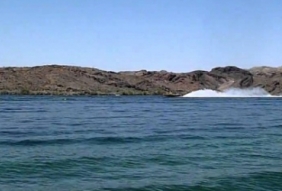
Posted on May 5, 2016
By Chip Hubert, Pilot-Tribune
The Storm Lake LIC approved the new contract between themselves and the Iowa DNR, in which the DNR gives the LIC $850,000 (90% of the cost) for the dredging project through December of 2018 on the condition the LIC matches 10%. The LIC has about $47,000 on hand, but needs a total of $94,5000 to meet their portion of the agreement.
The dredging is expected to be completed before the end of the year 2020 and is limited by the capacity of the storage site. Dredge America, the company contracted to do the work, is expected to remove between 500,000 and 630,000 cubic yards of ‘spoil’ per year. This year, no problems are expected, but during the 2017 season, it will become more challenging to meet water quality standards for the water being returned into the lake from the spoil site. Water quality is reduced because the volume of the storage site decreases as it fills up, the water flowing through it moves faster, so the silt doesn’t settle out as well. Possible remedies could include use of coagulants or polymers to clarify the water at the spoil site.
At last month’s meeting, city Public Works Director Jason Etnyre informed the board of an erosion problem on the berm between the two spoil sites, and the benefits of a system to allow spoil water to flow between the two sites- a “cross over system.” The board approved a contract for Redding’s Sand and Gravel to repair the berm and install the crossover.
Regarding this season’s dredging, the dredge is being put back together after several repairs during the off season. Etnyre said “We’re getting close. It could be as early as Tuesday morning when we close Sunrise Road to put the dredge pipe back into the lake.”
Engineering firm FYRA has been researching possible measures to clear up the lake water after dredging has been completed. Early this year they submitted a proposal to the DNR, the DNR returned it to FYRA with recommended changes, and now FYRA has replied to the DNR. Environmental Specialist Julie Sievers said her department has received the response, but the DNR has not had a chance to review it among themselves. She said she will have more information at the May meeting. Among Fyra’s recommendations was the use of alum in the water to cause silt to congeal into big enough particles to settle to the bottom, and breakwater structures to shield shallow water from wave action.
Source: Pilot-Tribune





